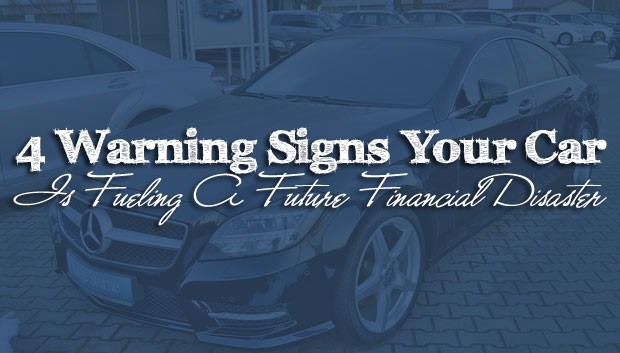By John Anderson | Article from Bible Money Matters.com
It’s overwhelming isn’t it?
Sitting in the office at a car dealer, a mixture of emotions passing through your mind. You love that new car you just test drove; it’s the perfect color, it looks great, it smells wonderful, the reviews are terrific, you can afford the monthly payment advertised in the paper, and you deserve it, right?
But then the doubts creep in. Am I spending too much? Should I visit a few more dealers and compare prices? Is this sales rep trying to cheat me? Could I keep my old car and fix it up? How about that used Honda Civic that the magazines say is my best bet?
Then the sales rep brings out a stack of papers to sign and starts selling alarm systems, automatic starters for the cold winter mornings, and extended warranties — and you haven’t even made it to the finance guy to talk about how to pay for the car.
Do you get up from that chair and tell the sales person, “I have to think about it”? Do you hear your father’s voice saying, “You don’t need a new car; save your money”?
So, how can you be sure you aren’t unknowingly fueling a financial disaster?
The following are four often over-looked signs to look out for.
Sign #1: Not Understanding How Much You Can Afford
You want to be rich?
Spend less than you make, and either put the difference into assets that grow, or sink your money into reducing debt.
You want to be poor?
Spend more than you make, buy assets that decrease over time, and increase your debt.
A car is an asset that declines in value over time. If you buy a new car, the value could decrease 20-40% over the first few years. A $40,000 new car could lose $8,000 to $16,000 in a short time. How would you feel if you lost that much money gambling? Not too good I would guess.
I’m sure most people have either experienced or heard about someone who has a home where the mortgage is more than the house is worth (upside-down mortgage). But how many people have looked at their autos to see that they may be in this same situation?
Let’s say you buy a new car for $40,000 and you don’t have the money for a down payment or don’t want to put anything down. When you add in sales tax, dealer prep, and license fees, you could be financing $45,000.
How about buying a used car for $12,500? Well, it’s used, so you already have much of the depreciation taken, and your taxes and fees will be about $1,500. So you’re only out the $1,500 if you had to turn around and sell it, compared to being out $7,000 if you had to sell the new car. That is a huge difference.
So what is the right amount to pay for a car?
Many personal finance people recommend using 50% of your gross annual pay to determine the purchase price of a car. If you make $50,000 per year (before taxes, insurance, etc.), buy a car for $25,000.
Do you want to be even more aggressive? Reduce the cost to 25% of your gross annual pay.
None of this may apply to you if you need your vehicle to travel a lot with outside sales or you need a truck for your business. Both of these examples show a need for a vehicle that you can depend on for your job. Try to go for the least amount of cost that will bring you what you need to do your job.
Sign #2: The Car Is “Too New” Or “Too Used”
I’m sure most of you would know without reading any further that buying a used car makes more financial sense than buying a new one, right?
But can you put any numbers to it?
Let’s assume you put away $2,400 per year by being frugal and buying a used car, and you continue to do so for the forty years you work. That would equate to saving $96,000 — not too shabby.
But, assume instead that you take that $2,400 savings and invest it at 8% over 40 years. How much is that worth? Try about $700,000!
Some people worry that buying a used car will mean more repairs and that the costs will be more than if they just bought new, but as you can see from the calculation, their worry is unwarranted.
Cars now can go 100,000 – 200,000 miles with proper maintenance. If those miles came from driving on the highway as opposed to stop-and-go driving, so much the better.
Look for vehicles that are one to 10 years old, with three to five being the sweet spot.
If the vehicle is older, find one owned by someone who is meticulous with the maintenance and has already had the high-dollar items such as timing belts and catalytic converters replaced.
Sound mechanicals trump looks. You may not love the color or the dings in the door, but if it runs well, live with it.
Sign #3: Taking Out A Loan That Will Outlive The Car
When I was younger, car loans were three to four years long on average. Now, car loans can be obtained for six or seven years.
While you may be tempted to lower your monthly payment by grabbing that longer-term loan, look at what that does to you financially.
A $25,000 loan at 5% (current auto loan rates as of this writing) over three years gives you a monthly payment of $749, and you would pay $1,974 in interest over the life of the loan.
Stretching the loan to seven years would reduce the monthly payment to $353. This is a strategy used by many car sales reps to lure people into buying cars they can’t afford by showing them a low monthly payment. However, the interest cost over the life of the loan swells to $4,681, or about 19% of the original loan amount.
Wouldn’t you rather have the extra $2,707?
What if you can’t afford the monthly payment of $749 per month?
See the previous discussion on overspending. If you purchased a car for $12,500 instead of $25,000, your monthly payment would be $375 per month.
Sign#4: Ignoring The Total Cost Of The Car
An often overlooked cost of buying a car is sales tax. Now, this will vary by state or local rates, but the lesson learned is the same: the more expensive the car, the more sales or use tax you will pay.
Where I live, the sales tax on a new car is about 9%, so a $40,000 new car would equal about $3,600 in tax. If you financed that tax with your purchase price over seven years, it would be even more.
A $25,000 used car would have a tax of $1,250 (where I live), and a two-year-old car with a purchase price of $12,500 would have a tax of only $290…a savings of $3,310 over the new car example above.
Another potential big cost is an extended warranty. These can add another $1,000 – $2,000 or more to the cost of the car. The debate rages on whether to buy one or not.
If you’re buying a new car that gets great reviews for dependability and has a three-year factory warranty, why would you need to extend it?
If you’re buying a used car, you could just put money aside each money for potential repairs instead of buying a warranty.
Also, not everyone knows that you can negotiate the price of the extended warranty. I turned down purchasing one, but I was offered a seven-year platinum extended warranty for half off; that was too good to pass up.
Insurance is also a cost that you’d be best not to forget.
The Bottom Line
Deciding to buy a car can be overwhelming, but it doesn’t have to be. If you follow the above guidelines, you can rest assured that you’ve followed sound financial guidance on your purchase.
You can break free from the chains of anxiety, doubt, and worry that came from wondering if you made a smart decision. You can feel free!
This article was written by John. You can find him over at Simple Financial Fitness
♦




